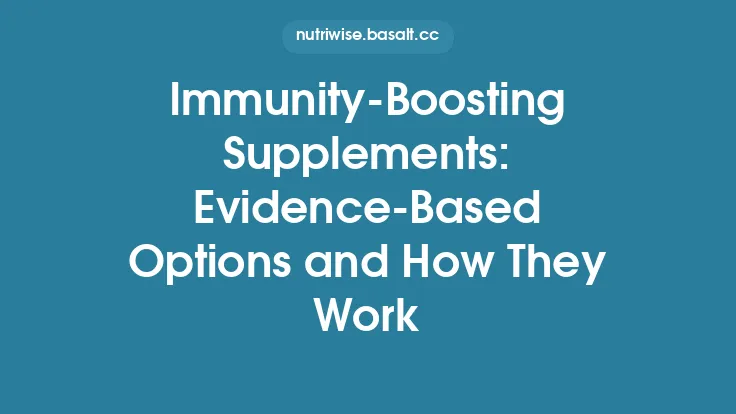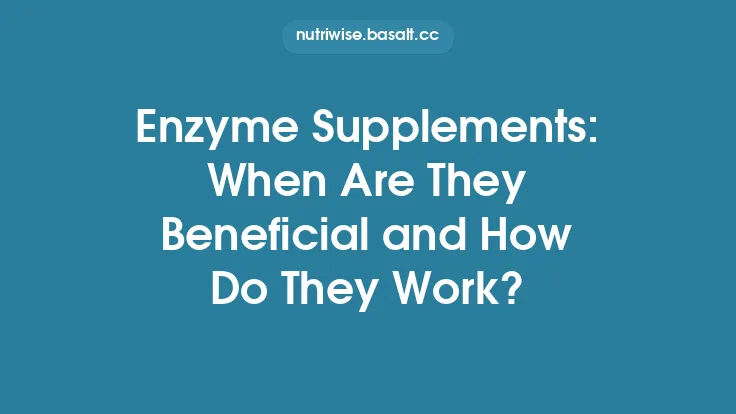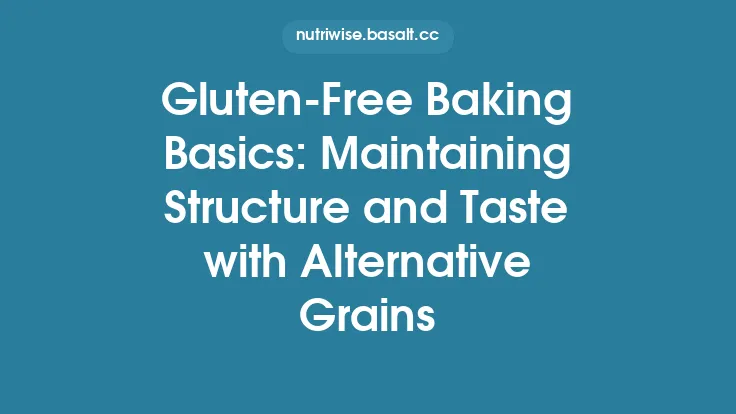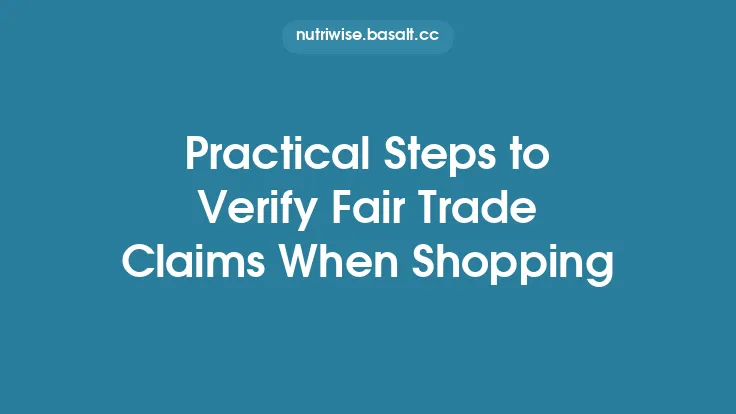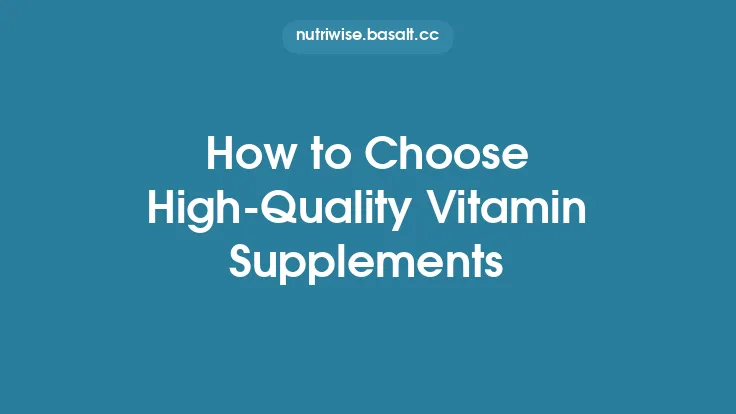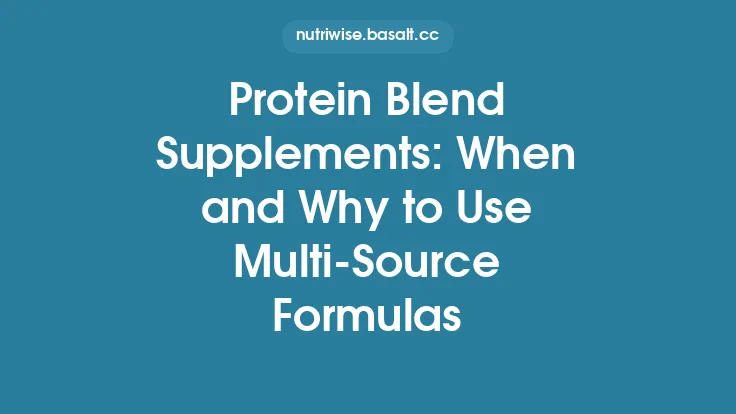Gluten‑free labeling has become one of the most visible claims on grocery shelves, but the presence of the phrase “gluten‑free” does not always mean the same thing for every consumer. Understanding when a gluten‑free claim is truly necessary—and when it may be more marketing than medicine—requires a look at the science of gluten, the regulatory framework that governs labeling, and the real health conditions that drive the need for strict avoidance.
The Biology of Gluten and Why It Matters
Gluten is a composite of storage proteins—primarily gliadin and glutenin—found in wheat, barley, rye, and, to a lesser extent, oats that have been contaminated with these grains. In most people, gluten passes through the digestive system without incident. However, three distinct medical conditions can make gluten a serious health hazard:
- Celiac Disease (CD) – An autoimmune disorder affecting roughly 1 % of the global population. Ingesting even trace amounts of gluten triggers an immune response that damages the small‑intestinal villi, leading to malabsorption, nutrient deficiencies, and a host of systemic symptoms. The damage is dose‑dependent; even 10 mg of gluten per day can be harmful for many patients.
- Non‑Celiac Gluten Sensitivity (NCGS) – A condition characterized by gastrointestinal and extra‑intestinal symptoms that improve when gluten is removed, without the autoimmune markers of CD. The exact threshold for symptom provocation varies widely among individuals, and the underlying mechanisms are still being researched.
- Wheat Allergy – An IgE‑mediated allergic reaction to wheat proteins (including, but not limited to, gluten). Symptoms can range from mild oral itching to anaphylaxis. While the allergy is specific to wheat, many wheat‑containing products also contain barley or rye, making a broader “gluten‑free” claim useful for safety.
These conditions differ in pathophysiology, diagnostic criteria, and the level of gluten avoidance required, but all create a legitimate need for reliable gluten‑free labeling.
Regulatory Landscape: What “Gluten‑Free” Means on the Shelf
United States (FDA)
The U.S. Food and Drug Administration (FDA) defines a product as “gluten‑free” if it contains less than 20 parts per million (ppm) of gluten. This threshold is based on clinical studies indicating that most individuals with celiac disease can tolerate this level without intestinal damage. The regulation also requires that the product be produced in a manner that prevents cross‑contamination and that any gluten‑containing ingredients be removed or reduced to meet the 20 ppm limit.
Key points for manufacturers:
- Testing – Gluten content must be verified using validated analytical methods (e.g., ELISA, LC‑MS/MS). Random batch testing is encouraged to maintain compliance.
- Labeling – The claim must be placed prominently, and any statements about “no gluten-containing ingredients” must be truthful.
- Exemptions – Naturally gluten‑free foods (e.g., fresh fruits, vegetables, meat) are not required to carry the claim, though they may do so voluntarily.
European Union (EU)
The EU adopts a similar standard: ≤20 ppm gluten for a product to be labeled “gluten‑free.” Additionally, the EU allows a “very low gluten” claim for products containing ≤100 ppm gluten, provided the label clearly states the limitation. The EU also mandates that manufacturers implement risk‑based preventive controls to avoid cross‑contamination throughout the supply chain.
Canada, Australia, and Other Jurisdictions
Canada’s Food and Drug Regulations also set the limit at ≤20 ppm, while Australia and New Zealand follow the same standard under Food Standards Australia New Zealand (FSANZ). Although the numeric thresholds align, each region may have distinct requirements for traceability, certification, and post‑market surveillance.
When Is a Gluten‑Free Claim Actually Necessary?
1. Products Intended for Individuals with Celiac Disease
For any packaged food that could be consumed by someone with celiac disease, a gluten‑free claim is essential. This includes:
- Processed foods (bread, pasta, sauces, snacks) where wheat, barley, or rye are common ingredients.
- Convenience meals that may contain hidden gluten (e.g., soy sauce, malt flavoring, certain spices).
- Supplements and nutraceuticals that use wheat‑derived fillers or binders.
Because celiac disease requires strict lifelong avoidance, the presence of a reliable gluten‑free label is a safety net that prevents accidental exposure.
2. Foods Targeted at the Gluten‑Sensitive Population
Even though the scientific community continues to debate the exact prevalence and mechanisms of NCGS, many consumers self‑identify as gluten‑sensitive. For these individuals, a gluten‑free claim provides reassurance that the product is unlikely to trigger symptoms. However, it is crucial that manufacturers avoid “gluten‑free” claims on products that are merely “low‑gluten” unless they meet the regulatory threshold.
3. Products Containing Wheat but Not Gluten
Some foods contain wheat starch that has been processed to remove gluten. In such cases, the product may still contain trace gluten, and a “gluten‑reduced” or “contains wheat” statement may be required, depending on the jurisdiction. A gluten‑free claim is only appropriate if the final product meets the ≤20 ppm standard.
4. Cross‑Contamination Risks in Shared Production Facilities
Manufacturers that produce both gluten‑containing and gluten‑free items on the same line must implement segregation protocols (e.g., dedicated equipment, thorough cleaning, air‑flow controls). When these controls are validated and the final product meets the regulatory limit, a gluten‑free claim can be used. Without such controls, the claim would be misleading and potentially dangerous.
5. Naturally Gluten‑Free Foods
Fresh produce, unprocessed meats, dairy, and most legumes are inherently gluten‑free. While they do not *need* a gluten‑free claim, some brands choose to label them as such for marketing differentiation or to assist consumers with celiac disease who may be scanning for safe options. In these cases, the claim must be truthful and not imply any additional processing.
Common Misconceptions About Gluten‑Free Labels
| Myth | Reality |
|---|---|
| All “gluten‑free” foods are healthier. | Gluten‑free does not automatically mean lower calories, higher fiber, or better nutrition. Many gluten‑free products are formulated with refined starches, added sugars, or higher fat content to mimic texture. |
| If a product is “gluten‑free,” it’s safe for anyone with a wheat allergy. | Wheat allergy is an IgE‑mediated response that may be triggered by wheat proteins other than gluten. A gluten‑free claim does not guarantee the absence of wheat allergens unless the label also states “wheat‑free.” |
| Oats are always gluten‑free. | Pure, uncontaminated oats are gluten‑free, but most commercial oats are processed in facilities that also handle wheat, barley, or rye, leading to cross‑contamination. Certified gluten‑free oats are required for celiac patients. |
| A “no wheat” label means the product is gluten‑free. | Barley and rye also contain gluten. A “no wheat” claim does not address these grains, so the product may still contain gluten. |
| Gluten‑free claims are only needed for packaged foods. | Even bulk or bulk‑bin items (e.g., rice, beans) can become contaminated during handling. Some retailers provide “gluten‑free” signage for these items, but the claim must be based on verified testing. |
How Manufacturers Verify Gluten‑Free Status
- Ingredient Sourcing – Selecting raw materials that are certified gluten‑free or have documented gluten‑free status. Supplier audits and certificates of analysis (CoA) are standard practice.
- Risk Assessment – Conducting a Hazard Analysis and Critical Control Points (HACCP) study focused on gluten cross‑contamination. Critical control points may include cleaning procedures, equipment change‑over, and storage segregation.
- Analytical Testing – Using validated methods such as:
- ELISA (Enzyme‑Linked Immunosorbent Assay) – The most common screening tool, capable of detecting gluten down to 5 ppm.
- LC‑MS/MS (Liquid Chromatography‑Tandem Mass Spectrometry) – Offers higher specificity, especially for complex matrices where ELISA may give false positives/negatives.
- PCR‑Based Methods – Detect DNA from wheat, barley, or rye, useful for confirming the presence of gluten‑containing grains.
- Batch Verification – Testing each production batch (or a statistically valid sample) to ensure compliance with the ≤20 ppm threshold.
- Documentation and Traceability – Maintaining records of ingredient certificates, test results, cleaning logs, and corrective actions. This documentation is essential for regulatory audits and for responding to consumer inquiries.
The Role of Third‑Party Certification
While regulatory compliance is mandatory, many brands pursue third‑party gluten‑free certification (e.g., Gluten-Free Certification Organization (GFCO), Celiac Support Association (CSA) certification). These programs typically require:
- More stringent testing (often ≤10 ppm) to provide an extra safety margin.
- Annual audits of the manufacturing facility.
- Clear labeling that includes the certifying body’s logo, which can increase consumer confidence.
For consumers with celiac disease, a third‑party seal can be a valuable indicator that the product has undergone rigorous verification beyond the minimum legal requirement.
Practical Guidance for Consumers
- Read the Full Ingredient List – Even if a product bears a gluten‑free claim, check for hidden sources such as maltodextrin, modified food starch, or hydrolyzed vegetable protein, which may be derived from gluten‑containing grains.
- Look for Certification Seals – When possible, choose products with recognized third‑party gluten‑free certification, especially for high‑risk foods like sauces, processed meats, and baked goods.
- Beware of “Gluten‑Reduced” or “No Wheat” Claims – These do not guarantee gluten‑free status. Verify the actual gluten content if you have celiac disease.
- Consider Cross‑Contact Risks – Even naturally gluten‑free foods can become contaminated. In restaurants or bulk bins, ask about preparation practices and whether dedicated utensils are used.
- Stay Informed About Updates – Regulatory thresholds and testing technologies evolve. Follow reputable sources (e.g., Celiac Disease Foundation, FDA updates) for the latest guidance.
Future Directions: Emerging Technologies and Policy Trends
- Rapid On‑Site Testing – Portable immunoassay devices are being refined to give near‑real‑time gluten measurements, potentially allowing manufacturers to test at multiple points in the production line.
- Genomic Editing – CRISPR‑based approaches aim to develop wheat varieties with reduced immunogenic gliadin peptides, which could eventually lower the need for strict gluten‑free labeling for certain populations. However, regulatory acceptance and consumer perception remain hurdles.
- International Harmonization – Efforts are underway to align gluten‑free standards across regions, simplifying global trade and reducing consumer confusion. The Codex Alimentarius Commission is reviewing the 20 ppm threshold to ensure it reflects the latest scientific evidence.
- Digital Traceability – Blockchain and other ledger technologies are being piloted to provide immutable records of ingredient sourcing and testing, enhancing transparency for consumers and regulators alike.
Bottom Line
A gluten‑free claim is not a blanket marketing slogan; it is a critical safety indicator for individuals with celiac disease, wheat allergy, and, to a lesser extent, non‑celiac gluten sensitivity. The claim becomes necessary when:
- The product could contain gluten‑containing grains or be exposed to cross‑contamination.
- The target consumer base includes people who must avoid gluten for medical reasons.
- The manufacturer can substantiate the claim through rigorous testing and validated controls.
When these conditions are met, the gluten‑free label serves its intended purpose: protecting health, guiding informed choices, and fostering trust between producers and consumers. For everyone else, the label is a useful piece of information—but not a guarantee of superior nutrition. Understanding the science, regulations, and practical realities behind gluten‑free claims empowers both shoppers and food professionals to navigate the modern marketplace with confidence.
